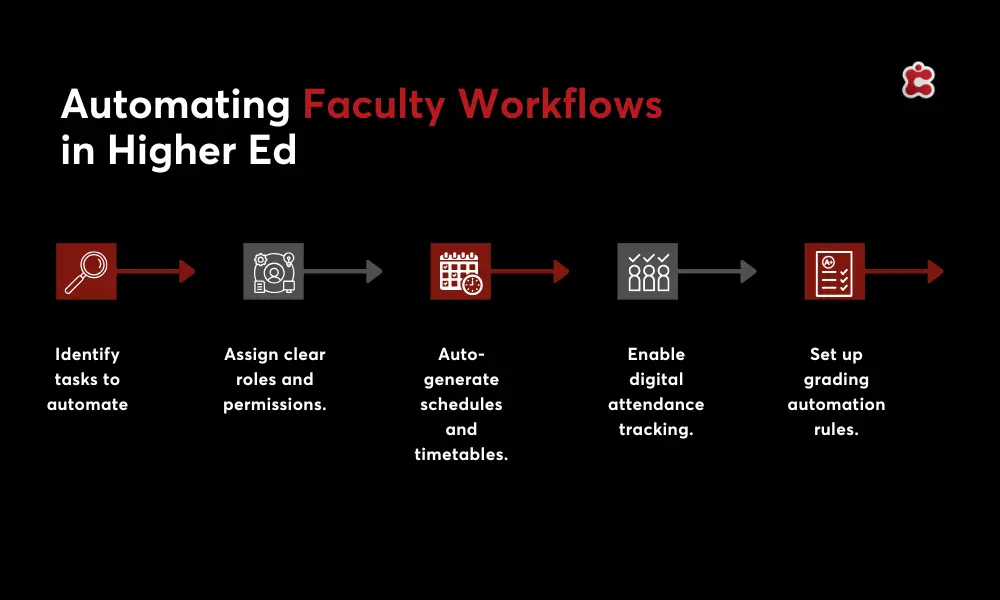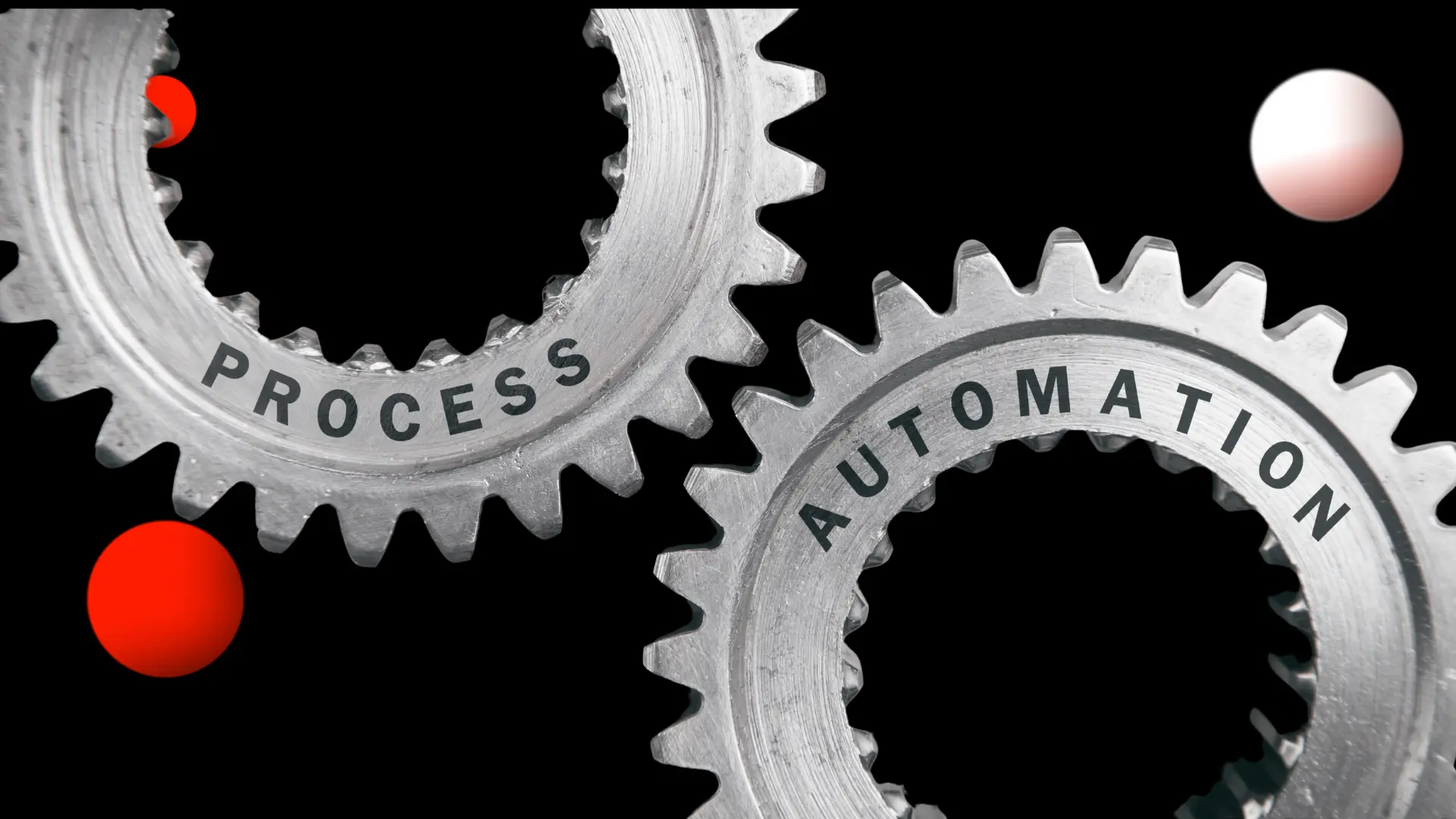Higher education software today looks nothing like it did 20 years ago. With the rise of digital tools, many institutions have adopted school management software to keep things running smoothly. But here’s the catch: while the software is in place, most institutions aren’t making the most of the tools they already have (and are paying for). Faculty are still stuck doing time-consuming tasks manually, from building schedules to tracking attendance and managing grades. These routine admin duties not only drain time but also take focus away from teaching and student engagement.
The good news? Your existing school management software likely has the automation features you need—you just haven’t tapped into them yet. In this article, we’ll walk you through a step-by-step guide to automating faculty workflows, helping your institution save time, reduce errors, and run more efficiently. Let’s explore how to make your software work harder for your academic team.

1. Audit Faculty Workflows That Can Be Automated
Before you can automate anything, you need a clear picture of what’s actually happening behind the scenes. Start by taking a closer look at how faculty are currently handling their day-to-day tasks. You’ll probably find a mix of digital tools, spreadsheets, and a surprising number of email chains. This step is all about identifying what’s manual, what’s inefficient, and what could be improved using your school management software.
Here’s where to look:
- Grading and calculating final marks
- Taking and recording student attendance
- Building class schedules and timetables
- Managing course content and uploading syllabi
- Sending student progress updates via email
- Coordinating exam logistics and invigilation
- Manually entering data into spreadsheets
- Communicating with students outside the platform
2. Organize Faculty Roles and Permissions in the Platform
Once you’ve identified which tasks can be automated, the next step is to make sure your faculty are set up correctly in your school management software. Why does this matter? Because automation settings often depend on user roles and permissions. If roles are unclear or access is too broad, it becomes harder to streamline workflows.
Start by grouping faculty based on relevant categories: department, subject area, teaching rank, or campus location. Then, assign access levels that match each group’s responsibilities. For example, a department head might need visibility across all courses, while a lecturer only needs access to their assigned classes.Take advantage of role-based dashboards. These help faculty see only what’s relevant to them, reducing clutter and making it easier to manage tasks. Organizing roles properly not only improves data security but also unlocks powerful automation tools already built into your school management software.
3. Automate Course Scheduling and Timetabling
Use Timetable Generation Features and Templates
Start by exploring your platform’s built-in timetable generator. Most school management systems offer templates to help you create weekly schedules based on course loads, available rooms, and faculty availability. Classter, for example, includes a dynamic scheduling engine that simplifies this process with customizable templates.
Automate Conflict Detection
Let the system flag scheduling clashes automatically. Whether it’s double-booked rooms, overlapping faculty assignments, or student timetable conflicts, automation helps you catch and fix issues before they happen.
Set Recurring Academic Events
Streamline your calendar by scheduling recurring events like semesters, holidays, and exams once—then let your system handle the rest each year.
4. Set Up Digital Attendance Tracking Tools
Taking attendance might seem like a small task, but over time, it adds up. That’s why setting up digital attendance tracking is such a smart move. Most school management software platforms come with features to make this easy and accurate.
Start by enabling mobile or web-based check-in options. Faculty can mark attendance directly from their devices, whether they’re in the classroom or teaching remotely. It’s quick, convenient, and eliminates the need for paper records.
Next, automate attendance reporting. The system can generate daily or weekly reports and flag anomalies like repeated absences or missed sessions. This data is incredibly useful for spotting trends early.
You can also sync attendance data with other tools in your system. For example, link it to grading or set up alerts when students fall below a certain attendance threshold. It’s a simple way to boost accountability and ease the admin load.
5. Create Grading Automation Rules and Templates
Automating grading helps faculty save time and improve accuracy. Here’s how to get started:
- Preload assessment types, weighting rules, and grade calculation formulas into your school management software. This ensures grades are calculated consistently without manual effort.
- Enable auto-publishing of grades to student and parent portals to keep everyone updated in real time and reduce individual communications.
- Set up automatic generation of progress reports so the system compiles and formats student performance data without manual work.
- Use conditional logic for grading, such as automating pass or fail statuses based on defined thresholds, to add clarity and speed up the process.
- Review and adjust grading templates regularly to match course requirements and academic policies.
- Train faculty on how to use these automated features to maximize efficiency and reduce errors.
- Monitor automated grading outcomes to ensure accuracy and fairness across courses.
Classter’s All-in-One School Management Software
If you are looking for a platform that can handle every step of automation in one place, Classter has you covered. Classter’s all-in-one school management software is built for higher education institutions that want to work smarter, not harder. From automating course scheduling and grading to managing communication, attendance, and reporting, Classter gives faculty the tools they need to save time and stay organized.
The platform allows you to set up role-based permissions, streamline academic calendars, auto-publish grades, and generate detailed reports with just a few clicks. It’s user-friendly, cloud-based, and fully customizable to fit the needs of your institution—whether you’re running a small college or a multi-campus university.
With everything in one place, there’s no need to switch between systems or rely on manual processes.
Ready to streamline faculty workflows?
Book a free demo and see how Classter can work for your institution.
FAQ’s
You can automate workflows by organizing faculty roles, setting up grading templates, using timetable generators, enabling digital attendance, and automating communication. Most platforms already include these features—they just need to be activated and configured.
Grading, attendance tracking, schedule creation, exam coordination, student progress reports, and academic calendar updates are common manual tasks that can be automated using school management software.
Classter is an all-in-one platform that covers academic, administrative, financial, and communication needs. Its higher education automation tools are built to reduce manual workload and enhance institutional efficiency.

